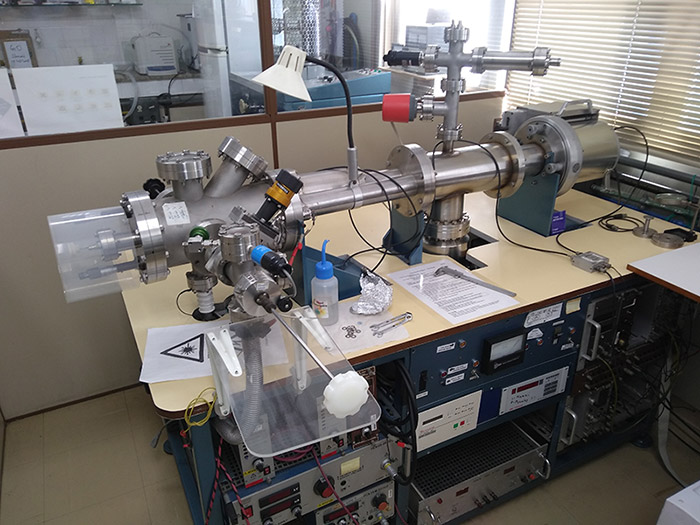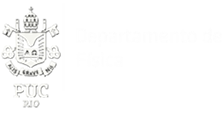 Area of interest:
Area of interest:
The activities carried out in the LEMM range from basic research (theoretical and experimental) to applied research (mass spectrometry and its instrumentation). These tasks are interdisciplinary, involving not only students and researchers in Physics, but also those of Chemistry, Biochemistry, Astrophysics and Engineering.
Studies of the ion desorption mechanisms induced by ion beam of the Van de Graaff accelerator, 252Cf fission fragments, and electron beams are developed.
Processes studied in basic research:
i) Ion desorption mechanisms induced by ion beams delivered by the 4 MV Van de Graaff accelerator, by 252Cf fission fragments or by electron beam from 50 to 1000 eV.
ii) Radiolysis and chemical reactions induced by the ionizing radiations above mentioned.
iii) Fragmentation of ionized molecules in free flight.
In applied research, the emphasis is on:
i) Development in instrumentation: ion optics, position-sensitive ion detectors and time-of- flight mass spectrometers (TOF);
ii) Surface analysis of solids and macromolecules (polymers, biological macromolecules).iii) Application in astrophysics: degradation of prebiotic molecules by ion and electron beams.
Relevance / Impacts
A relevant feature of the Laboratory is to conduct frontier research with instrumentation built at the University and with the participation of students. Academic training in the area of specialized scientific instrumentation is another the central objective of the LEMM. A consequence of the scientific investigation with non-commercial instruments is the generation of scientific data in particular conditions, using research niches among the traditional lines.
Brief history
Initially constituted by one of the Van de Graaff accelerator lines, a time-of-flight mass spectrometer (TOF) was added in which the ionizing agent is an ion beam (fission fragments, tens of MeV) produced by a radioactive source of 252Cf. This spectrometer, designed and built as a PADCT project, is versatile and can receive as ultraviolet radiation or keV electron and ion guns ionizing sources.
Infrastructure
– Time-of-flight mass spectrometer, manufactured in the laboratory, equipped with an electrostatic ion mirror with two stages (Reflectron type), which can be operated in linear and reflected modes. The sample can be cooled down to 10 K by means of a liquid He cryostat.
-Position sensitive microchannel plate (MCP) sensors.-Ionizing sources: 252Cf fission fragments and Kimball FRA-2X1 electron gun.
– Thin film evaporator.
– Infrastructure for chemical manipulation, with vent chamber for toxic gases, analytical balance, reagents, etc.
Other relevant information:
The LEMM is located in the 4th. floor of the Van de Graaff Accelerator Laboratory (Father Roser Building.)
Contact
Email: enio@vdg.fis.puc-rio.br
Tel: 21 3527-1272 ext. 216 (or ext. 210 for Secretary)
